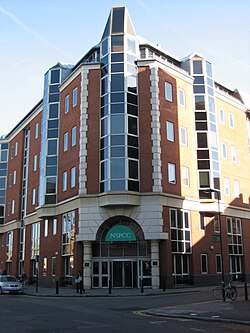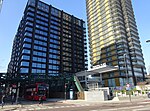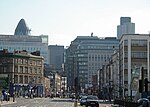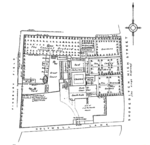Principal Tower
Foster and Partners buildingsLondon building and structure stubsResidential buildings completed in 2019Residential skyscrapers in LondonShoreditch

Principal Tower is a 50-storey residential tower in Worship Street, Shoreditch, London. It was completed in 2019.There are 298 apartments in the building, designed by the architects Foster and Partners.It is next to the 15-storey office block Principal Place, also designed by Foster and Partners. In July 2014, it was reported that the internet retailer Amazon.com was close to signing a lease to move its UK headquarters there. The project had been on hold since January 2012, when the anchor tenant, the law firm CMS Cameron McKenna, pulled out. Soon after, the developer Hammerson sold its interest in the scheme to Brookfield.
Excerpt from the Wikipedia article Principal Tower (License: CC BY-SA 3.0, Authors, Images).Principal Tower
Worship Street, City of London
Geographical coordinates (GPS) Address Nearby Places Show on map
Geographical coordinates (GPS)
| Latitude | Longitude |
|---|---|
| N 51.522 ° | E -0.0802 ° |
Address
Little Farm
Worship Street 115
EC2A 2BA City of London
England, United Kingdom
Open on Google Maps










